Don't wanna be here? Send us removal request.
Text
The Memories of Others - Akihiko Okamura
From the late 1960s to the early 1980s, renowned Japanese war photographer Akihiko Okamura (1929-1985) created a remarkable, compelling and largely unseen body of work in Ireland, north and south.
After covering the Vietnam War, Akihiko Okamura went to Ireland in 1968 to visit the country of JFK’s ancestors. Soon after, in 1969, he decided to move to Ireland with his family. From then on, he continually photographed the Troubles in the North and his life with his family in the South, until he suddenly passed away, in 1985.
His photographs of Ireland, which have barely been seen before, demonstrate a unique artistic vision. This uniqueness is partly because Okamura chose to live in Ireland: of all the international photographers active during those years, he was in this sense a singular case of absolute commitment to Irish and Northern Irish history. This fusion with his subject matter led him to create images which were innovative both in terms of his own practice and of the photographic representation of the Troubles. His profound, personal relationship with Ireland allowed him to develop a new method of documenting conflict: poetic and ethereal moments of peace in a time of war.
Unlike other representations of the North of Ireland at that time, Okamura’s photographs are almost all in colour. Made in the North as well as in the South of Ireland, his photographs broke from the photojournalistic tradition, creating a series of still lives and abstractions. Their gentle, muted palette operates in counterpoint to the violent situation in which they were produced; they are remarkably out of sync with the conventional, black-and-white, “heroic” photographic representations that have come to define this period. Okamura’s work reveals a more subjective perspective, often going beyond conventional photographic representations of riots, burning cars and bombed buildings, to capture quieter, intimate, quasi-surreal moments that reveal his empathetic concern for the communities he photographed. This intuitive narrative choice was intimately connected to the depth of his attachment to Ireland and the Irish people.


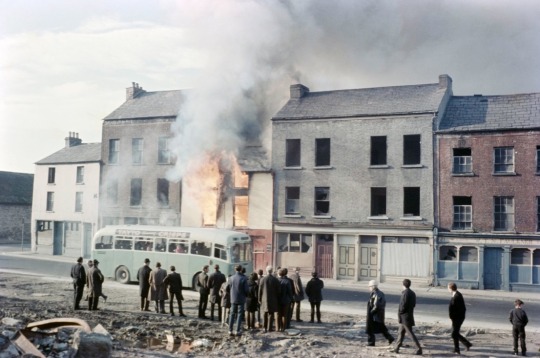
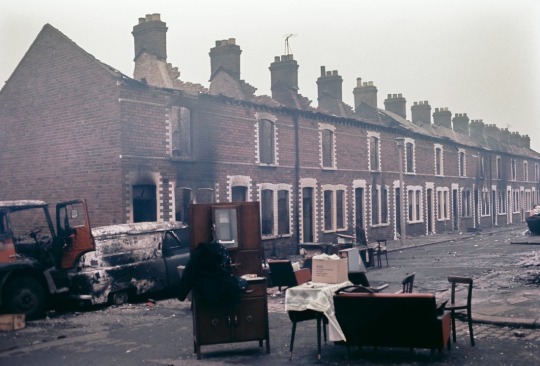
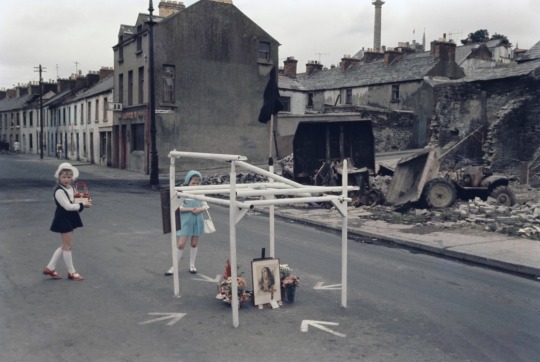
0 notes
Text
Irish painter Paul Nugent attended the National College of Art and Design, Dublin. Influenced by photographic reproductions of 18th century paintings, Nugent’s practice explores ideas of multiplicity and uniqueness, presence and absence. Constructed by layering acrylic paint over drawings on gessoed boards, his paintings appear as single colour field abstracts and reveal their contents over time.
Each painting painted blue has the appearence of a print maker’s printing plate or of the early photgraphic process of cyanotypes. The photographic references are inverted through the painting process into negative images creating a kind of visual representation of the subconcious. This recalls Freud’s ananlysis of the photographic process of the negative plate being like the sub-concious.
That which is opened to us for viewing has the character of a dream or memory evoking what the biologist and theorist Gerald Edelman called the remembered present, “as if participation and conscious flourish only in the hazy light of memory”. Paul Nugent’s work has always explored notions of history.





0 notes
Text
Vanitas are closely related to memento mori still lifes which are artworks that remind the viewer of the shortness and fragility of life (memento mori is a Latin phrase meaning ‘remember you must die’) and include symbols such as skulls and extinguished candles. However vanitas still-lifes also include other symbols such as musical instruments, wine and books to remind us explicitly of the vanity (in the sense of worthlessness) of worldly pleasures and goods.
Memento mori is a Latin phrase meaning ‘remember you must die’. A basic memento mori painting would be a portrait with a skull but other symbols commonly found are hour glasses or clocks, extinguished or guttering candles, fruit, and flowers.
Boltanski’s particular brand of postmemory is highly connected to the thematic and iconographic tradition of vanitas and its reminders of mortality.
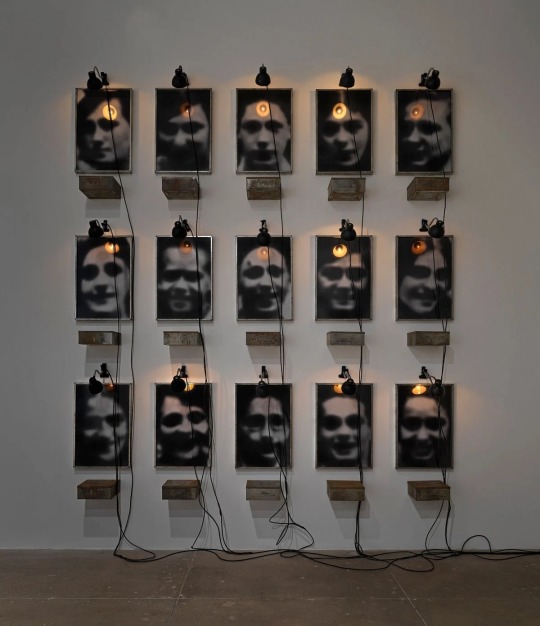

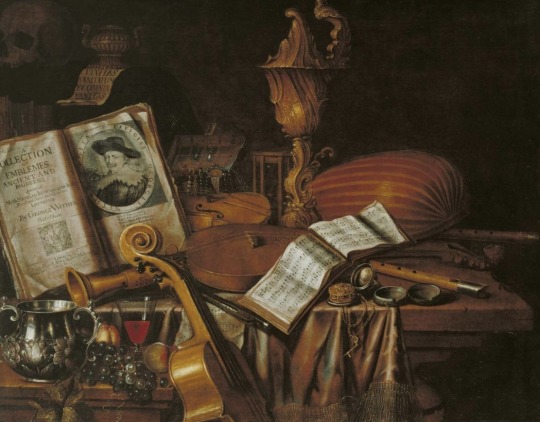
0 notes
Text
Mohammed Sami’s poignant and evocative paintings are an exploration of memory, and its vulnerability to time. Absent of people, the settings and quotidian objects in his works are nevertheless permeated with the trace of human presence; while evidence of turmoil or trauma is never directly referenced, obscure and haunting narratives are conveyed. Sami mines personal experiences from his formative years in Iraq to ground his work, but by embracing ambiguity, he creates a sense of universal familiarity. Negotiating the past through painting, he harnesses the metaphorical potential of different mark-making techniques to interrupt a straightforward narrative reading. Blurred objects often appear as if they are coming apart or moving across the canvas itself, suggesting gaps or slippage of memory. Sami’s compositions unfurl as cryptic vignettes of fragmented scenes, excavated from the past.
Rather than using the stereotypical image of trauma to testify to the Iraq conflict, which he witnessed first-hand, Sami deploys painting to articulate war, memory, and loss obliquely. The semi-abstract register and multi-textured paint create a nuanced relationship between the original event and its present recollection in Sami’s artworks. Sami uses Arabic linguistic signifiers such as Metonymy and Pun as metaphorical elements to exchange the radical depiction of trauma and conflict with the image of banal and mundane.




0 notes
Text
her methods, materials, and stylistic influences, Akunyili Crosby shows a deep awareness of contemporary artists from Robert Rauschenberg to Kerry James Marshall, while her visual vocabularies suffuse intimate domestic scenes with the products and riotous patterns of her African homeland. Akunyili Crosby produces large-scale drawings and paintings, frequently of interiors that suggest familiar narratives but retain elements of mystery and ambiguity. These scenes are often directly inspired by the artist’s own experiences and memories, and are populated by her family members, friends, and people she has met or recalls from back home.
I particularly enjoy Crosbys use of photo transfers hidden and blended into patterns in her paintings. She makes deliberate and complex use of transfer prints, using a mineral-based solvent to transfer photocopied images from newspapers and product catalogues, magazines and books, onto the support. (Rauschenberg used this technique to great effect in his work starting in the late 1950s.) Akunyili Crosby layers these transfers, creating dense patterns that may move from a figure to parts of a piece of furniture, a background wall, a carpet, or an architectural element, creating an atmosphere of tension and instability. The transferred images are drawn from a wide variety of sources, ranging from colonial-era portraiture through recent popular culture to the intricately detailed Dutch wax-print fabrics produced by the Dutch manufacturer Vlisco for the African market, and they often directly reference Nigerian and African-diaspora culture.

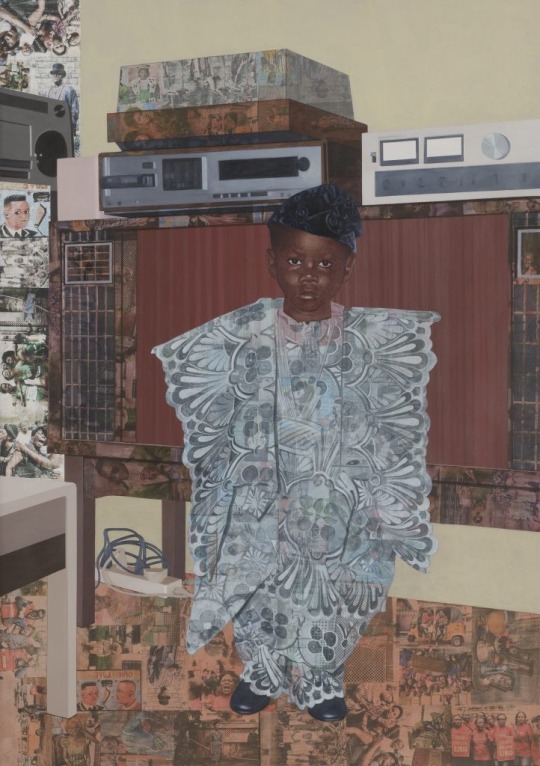
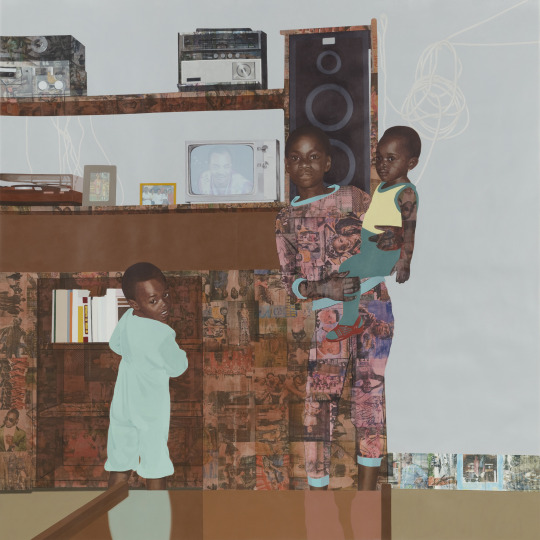

2 notes
·
View notes
Text
He has created a diverse body of artwork and performance art that explores urban tensions and geopolitics. Employing a broad range of media, from painting to performance, his works examine the tension between politics and poetics, individual action and impotence. Alÿs commonly enacts paseos—walks that resist the subjection of common space.
Cyclical repetition and mechanics of progression and regression also inform the character of Alÿs' actions and mythology—Alÿs contrasts geological and technological time through land-based and social practice that examine individual memory and collective mythology.




0 notes
Text
A nonnarrative work, Meshes of the Afternoon is a key example of the “trance film”—a work in which a protagonist is in a dreamlike state, and where the camera conveys his or her subjective focus. The central figure, played by Deren, is attuned to her unconscious mind and caught in a web of dream events that spill over into reality. Symbolic objects, such as a key and a knife, recur throughout the film; events are open-ended and interrupted. Deren explained that she wanted “to put on film the feeling which a human being experiences about an incident, rather than to record the incident accurately.”
youtube
1 note
·
View note
Text
Although Tuymans's main activity is painting, he has also worked with film and, recently, printmaking. His concern is with the mediation and translation of images through the mass media, and through the processes of painting or printing. Many of his images appear blurred or reduced, as though viewed at several removes, or camouflaged in some way. They are frequently based on photographs or film stills, which the artist photographs and re-photographs until much of the original detail and clarity is lost. This gradual deterioration of the image has its parallel in the apparent deterioration of the painted surface, a result of the cheap materials and distressed finishes which Tuymans employs. In his words, 'the work is about the loss of meaning, but also about the failure of representation'
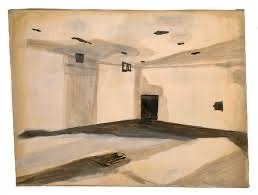


0 notes
Text
Gerhard Richter was born in 1932 in Dresden, Germany. Throughout his career, Richter has negotiated the frontier between photography and painting, captivated by the way in which these two seemingly opposing practices speak to and challenge one another. From exuberant canvases rendered with a squeegee and acerbic color charts to paintings of photographic detail and close-ups of a single brushstroke, Richter moves effortlessly between the two mediums, reveling in the complexity of their relationship, while never asserting one above the other.
Richter chose to paint from photographs because “the photograph is the most perfect picture. It does not change; it is absolute, and therefore autonomous, unconditional, devoid of style. Both in its way of informing, and in what it informs of, it is my source.”
About this at-the-time characteristic blurring in his paintings Richter asserts: “I blur things to make everything equally important and equally unimportant.”



0 notes
Text
Francisco José de Goya y Lucientes (1746–1828) is regarded as the most important Spanish artist of the late eighteenth and early nineteenth centuries. Over the course of his long career, Goya moved from jolly and lighthearted to deeply pessimistic and searching in his paintings, drawings, etchings, and frescoes.
In 1799, he completed and published a suite of eighty allegorical etchings called the Caprichos; Out Hunting for Teeth (18.64.12) and The Sleep of Reason Produces Monsters (18.64.43) are two etchings from this series. They introduce a world of witches, ghosts, and fantastic creatures that invade the mind, particularly during dreams, nightmarish visions symbolizing a world against reason.
Goya continued his account of the atrocities of war in a series of eighty-five prints called The Disasters of War. Executed from 1810 to 1820, the series depicts the travesties witnessed during Spain’s struggle for independence from France.




4 notes
·
View notes
Text
Jean Dubuffet saw fine art as dominated by academic training, which he referred to as ‘art culturel’ or cultural art. For Dubuffet, art brut − which included graffiti, and the work of the mentally ill, prisoners, children, and primitive artists was the raw expression of a vision or emotions, untrammelled by convention.
0 notes
Text
His work deals with the concepts of loss, memory, childhood, and death, often functioning as memorials or shrines to collective cultural rituals and events. Many of his installations may reference the lives lost in the Holocaust, striking both collective societal and personal chords.
Humans (1994) is one of several large-scale works by Boltanski that serves as a monument to the dead, hinting at the Holocaust without naming it explicitly. Within this haunting environment, Boltanski intermingles emotion and history, juxtaposing innocence and guilt, truth and deception, sentimentality and profundity.
‘What interests me, and what I try to talk about, is what I call “small memory”. This is what differentiates us one from another. The great memory can be found in history books, but the hoard of small bits of knowledge that each one of us has accumulated makes up what we are.’
Christian Boltanski, 1996
Boltanski was self-taught and cites Goya, the Old Masters, and Art Brut as his chief influences.

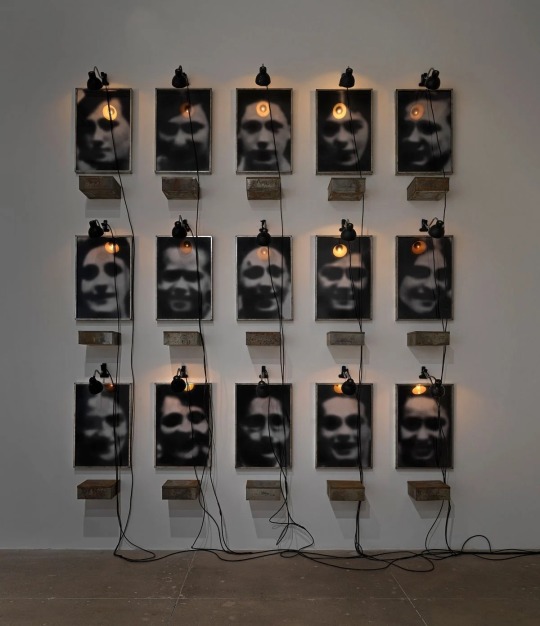


0 notes
Text
Ailbhe Ní Bhriain is an Irish artist whose practice incorporates film, computer generated imagery, collage, tapestry, print and installation. Ní Bhriain's work is rooted in an exploration of imperial legacy, human displacement and the Anthropocene. These intertwined subjects are approached through an associative use of narrative and a painstakingly crafted visual language that verges on the surreal. Ní Bhriain sidesteps directive positions and familiar binaries, exposing instead the layers of ambiguity and contradiction embedded in these fraught issues. The resulting worlds she creates are at once idiosyncratic, irresistible and deeply unsettling.







0 notes
Text
Kay uses the framework of a common cultural memory to reveal information specific to the artist. Kay call’s on the viewer to confront his or her own memories, either through an awareness of the artist’s omissions or by sharing her memories.

0 notes
Text
John Stezaker’s work re-examines the various relationships to the photographic image: as documentation of truth, purveyor of memory, and symbol of modern culture. In his collages, Stezaker appropriates images found in books, magazines, and postcards and uses them as ‘readymades’.

0 notes
Text
In this episode, we explore the role of memory in art. Pierre Bonnard relied on memory to create his paintings. This podcast asks how can our senses provoke memories and how can our past inspire us? We hear from contemporary artists, a stroke survivor, a neuroscientist and an author and poet.
2 notes
·
View notes